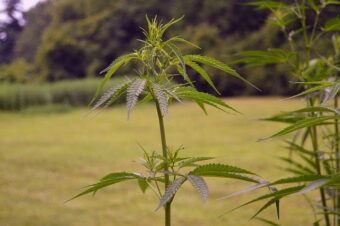You’ve likely known about medical cannabis at this point. In any case, what is it, precisely? What is medical marijuana? How is marijuana used medicinally? This article will tell you what medical cannabis is, the thing that it’s used for, and why.
Medical Cannabis: How Marijuana Is Used Therapeutically
You’ve likely known about medical cannabis at this point. In any case, what is it, precisely? How is marijuana used medicinally? This article will advise you strictly on what medical cannabis is, the thing that it’s used for, and why.
 What Is Medical Cannabis?
What Is Medical Cannabis?
When the vast majority consider cannabis, they may think back about their childhood and smoking joints in the family carport. Be that as it may, this picture of cannabis is a long way from a total image of the fantastic spice. The plant produces more than 500 substance mixes, and large numbers of them have genuine, authentic, and essential incentives in medication. Cannabis mixes have qualities to lessen pain, help rest, diminish inflammation, impact mindset, thus considerably more.
Medical cannabis is the title given to marijuana that is for practical purposes. Grown-ups and kids with genuine illnesses might have the option to get to medical cannabis. Yet, not without a proposal from a certified professional. Regardless of whether a medical expert can lawfully prescribe cannabis varies from country to country, and in the U.S., from state to state.

Medical versus Recreational Cannabis
Naturally, medical cannabis is equivalent to casual cannabis—similar plants are for medical or everyday purposes. The essential distinction between the two, nonetheless, is how medical cannabis is used.
Medical cannabis, including THC-rich cannabis, oversees displays and improves patients’ satisfaction with serious ailments. Recreational cannabis use for the sake of entertainment (or for some different reasons). Here is a straightforward outline of a portion of the key differences:
Getting the most significant benefits from medical cannabis requires a bit of direction and practice.
Around the planet, medical cannabis is getting on undeniably more rapidly than its casual partner. There are numerous valid reasons why medical cannabis may reduce signs and improve personal satisfaction in individuals with extreme, weakening, and dangerous diseases.
Marijuana is used medicinally in an assortment of ways and for a wide variety of conditions. However, in opposition to physician-endorsed prescriptions, how various professionals use medical marijuana is very factor—it indeed relies upon how satisfied your PCP is with medical cannabis.
When the vast majority consider cannabis, they may think back about their childhood and moving joints in the family carport. Be that as it may, this picture of cannabis is a long way from a total image of the fantastic spice. The plant produces more than 500 substance mixes, and large numbers of them have genuine, authentic, and essential incentives in medication. Cannabis mixes have qualities to lessen pain, help rest, diminish inflammation, impact mindset, thus considerably more.
Medical cannabis is the term given to marijuana that is for practical purposes. Grown-ups and kids with genuine illnesses might have the option to get to medical cannabis. Yet, not without a proposal from a certified professional. Regardless of whether a medical expert can lawfully prescribe cannabis varies from country to country, and in the U.S., from state to state.

Medical versus Casual Cannabis
Naturally, medical cannabis is equivalent to casual cannabis—similar plants are for medical or everyday purposes. The essential distinction between the two, nonetheless, is how medical cannabis is used.
Medical cannabis, including THC-rich cannabis, oversees manifestations and improves patients’ satisfaction with serious sicknesses. Casual cannabis use for the sake of entertainment (or for some different reasons). Here is a straightforward outline of a portion of the fundamental contrasts:
Getting the most significant advantages from medical cannabis requires a bit of direction and practice.
Around the planet, medical cannabis is getting on undeniably more rapidly than its casual partner. There are numerous valid reasons why medical cannabis may reduce signs and improve personal satisfaction in individuals with extreme, weakening, and dangerous diseases.
Marijuana is used medicinally in an assortment of ways and for a wide variety of conditions. However, in opposition to physician-endorsed prescriptions, how various professionals use medical marijuana is very factor—it indeed relies upon how satisfied your PCP is with medical cannabis.
Some canna-smart professionals will be very active, giving patients rules on what kinds of cannabis to utilize, what portion, and compositions. Others, nonetheless, may write the program and let experts at medical cannabis dispensaries handle the subtleties. All in all, be that as it may, medical cannabis has three unique structures:
Inhaled Cannabis
Smoked in cannabis is what it seems like—cannabis that’s inhaled into the lungs. If a medical expert suggests smoking cannabis, they will probably mean disintegrating cannabis blossom or focuses, and just when fundamental. Smoking cannabis can be bothering the lungs and is viewed as riskier to general wellbeing than vaporization. Smoked cannabis is frequently favored for patients who need quick alleviation.
Smoked cannabis is likewise an excellent method to benefit from the fragrant terpene profiles found close by cannabinoids. This fragrance is a direct result of terpenes that we have before-mentioned various cannabis strains.

Oral and Sublingual Cannabis
Oral cannabis methods ate and swallowed—sublingual cannabis methods under the tongue. Oral cannabis incorporates containers, cannabis oil, edibles, and refreshments. This cannabis readiness gives a more drawn-out enduring experience than smoked cannabis. Albeit, oral cannabis can deliver many more grounded impacts than smoking cannabis and assume control over two hours to grab hold’s emotional effects. Oral and sublingual cannabis is regularly used by patients who need enduring alleviation.
Active Cannabis
Effective cannabis will be cannabis that is applied topically to the skin. This sort of cannabis doesn’t cause a “high.” Effective cannabis works locally on the territory to which it is used. Diverse topicals additionally include changed initiation times, implying that a few items may take more time to kick in than others. Effective cannabis is regularly used by patients who need additional help in a particular territory.
Standard Qualifying Requirements for Medical Cannabis in the U.S.
Numerous specialists don’t think about cannabis, and patients may need to see a cannabis expert for explicit direction.
Over portion of the states in the U.S. have authorized probably some medical cannabis program—36 states, to be definite. In Canada, medical cannabis is legitimate from one side of the country to the other.
However, not everything patients can get to the spice, in any event, when it is fair for specialists to suggest. Further, in the U.S., laws in each state list diverse qualifying conditions. For instance, an ailment considered deserving of a medical cannabis suggestion in California may not qualify in Florida.
It’s to explore medical cannabis laws in your state or locale before mentioning your medical care supplier’s suggestion. In individual states, patients might be restricted to specific kinds of cannabis, for example, low-THC cannabis. In others, admittance to solid medical cannabis dispensaries might be troublesome. However, in any case, here is a short rundown of the absolute most basic qualifying conditions for medical cannabis and data on how cannabis is used restoratively for each situation:
Mental imbalance Spectrum Issue (ASD)
Mental imbalance spectrum problem (ASD) is a new development to the temporary condition list in various states. As it may, multiple forms may restrict medical cannabis approvals to patients encountering extraordinary, weakening, or self-harmful indications. In numerous medical cannabis states, ASD is a passing condition for pediatric patients.
Malignancy (Cancer)
Malignancy is a passing medical cannabis condition in pretty much every state. Numerous medical cannabis patients utilize the plant during chemotherapy therapy to advance craving, ease nausea and heaving, and oversee disease-related pain.
Even though the logical decision is yet out on what job cannabis can play in possibly treating the actual sickness, contemplates have uncovered that specific mixes in the plant can positively affect disease cells in rodents, just as bosom malignancy cells in vitro.
Epilepsy (seizure)
Epilepsy and other seizure issues are qualifying conditions in pretty much every medical cannabis state. The World Wellbeing Association (WHO), perhaps the loftiest general wellbeing specialists, recognizes that the cannabis compound cannabidiol (CBD) has effectively treated epilepsy in various medical preliminaries.
One drug organization, G.W. Drugs, advertises CBD for some severe types of epilepsy as a drug. Be that as it may, remedy treatment can be challenging for patients to obtain. Numerous patients with seizures depend on medical cannabis for help—both because of inclination and accessibility. An examination distributed in Mind and Advancement found that CBD-enhanced cannabis separate effectively decreased seizures in youngsters and youths with treatment-safe epilepsy.
HIV/Helps
HIV/Helps is another common passing medical cannabis condition—one of the first. Patients regularly use cannabis to ease manifestations. As indicated by a report from Americans for Safe Access, an association that battles for medical cannabis access the country over, medical cannabis may help increment craving, lessen nausea and heaving, battle weariness, and simplicity pain identified with HIV/Helps.
Numerous Sclerosis
Numerous Sclerosis (M.S.) is a reformist immune system illness that influences the sensory system. Various medical preliminaries have indicated that cannabis mixes can lessen M.S. manifestations, including pain, muscle fits, and mindset. A drug that contains an exact proportion of THC and CBD is accessible as an M.S. treatment in individual nations. The medication, Sativex, isn’t accessible in the U.S. In different countries, the novel drug is likewise significantly more costly than medical cannabis.
Queasiness and Nausia
Cannabis has a long history as an antiemetic. In this way, it’s nothing unexpected that queasiness and spewing much of the time make it onto the rundown of qualifying medical cannabis conditions. Even though a squeamish stomach isn’t probably going to earn a medical cannabis proposal—it’s ongoing sickness and spewing that is handicapping and meddles with everyday life that doctors are endeavoring to treat.
There’s another proviso to be thought of, too. Unnecessary cannabis utilization for delayed timeframes may add to nausea and regurgitating in specific individuals. An accomplished medical expert will have the option to observe the distinction between sickness and heaving that is helped by cannabis and when these indications are not.
Neurodegenerative Illness
Neurodegenerative illnesses, similar to Parkinson’s sickness, Huntington’s infection, and amyotrophic horizontal sclerosis (ALS), are primary qualifying conditions for medical cannabis. A certified medical expert will typically prescribe medical cannabis to ease indications, similar to pain and a sleeping disorder. A doctor may likewise prescribe cannabis to improve by and sizeable personal satisfaction for that Neurodegenerative Disease.
Neurodegenerative diseases, like Parkinson’s disease, Huntington’s disease, and amyotrophic lateral sclerosis (ALS), are common qualifying conditions for medical cannabis. A qualified medical professional will usually recommend medical cannabis to ease symptoms like pain and insomnia. A physician may also recommend cannabis to improve the overall quality of life for those with neurodegenerative disease.
Pain
Chronic pain is one of the most common reasons why patients seek out medical cannabis recommendations. Already, medical cannabis is studied as an alternative to addictive opioid painkillers. As such, debilitating pain is a common qualifying condition in many different states. Doctors may recommend medical cannabis as a natural analgesic to patients experiencing chronic, protracted pain.
Post-Traumatic Stress (PTSD)
Finally, post-traumatic stress (PTSD) is one of the most recent qualifying conditions in medical cannabis states. Research on PTSD and cannabis is still in its infancy. Yet, some of the results of the early experimental study are quite remarkable. Medical cannabis may help patients find relief from symptoms like nightmares, insomnia and improve the overall quality of life. But, only time and more research will reveal just how much cannabis can aid PTSD patients.
In closing, I want to welcome and salute you for taking the initial step to begin decreasing or reducing your pain. Please leave your comments, questions, or opinions below.
Cheers,
Kevin
kevin@hempmedicalbenefits.com

